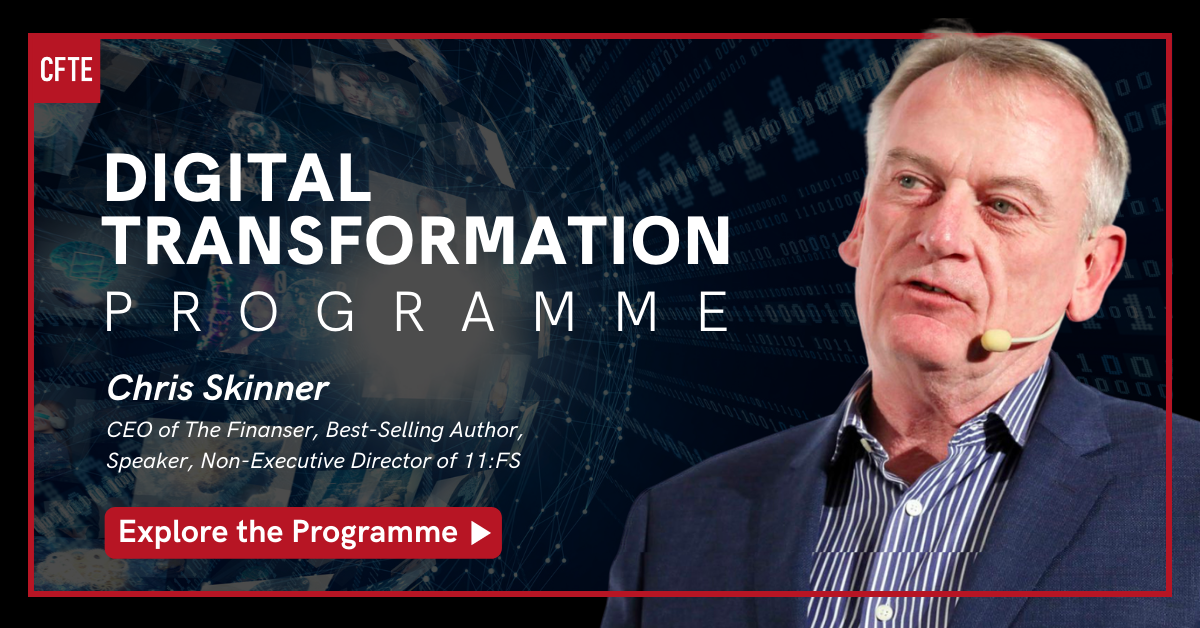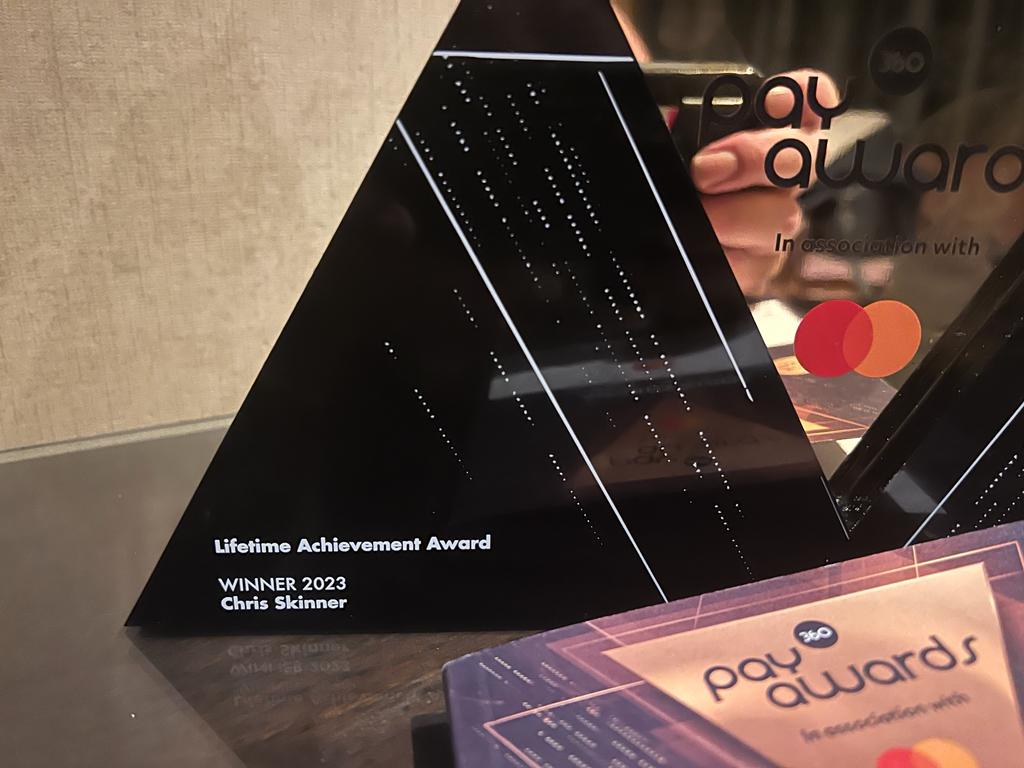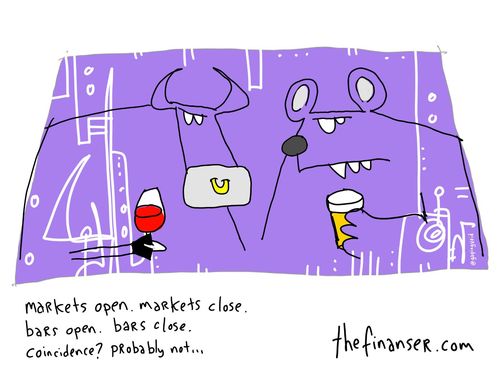Thomas Bostrøm Jørgensen, CEO of mobile payments and financial solutions firm Luup, presented at the FSClub the other day.
He spun an interesting story, particularly around the tripartite models emerging of mobile financial services, where they are either bank-led, carrier-led or a bank-carrier partnership.
The latter is probably harder than the other models, as it means co-operating and most firms want to ‘own the customer’ (I really hate that phrase – no-one ‘owns’ me).
According to Thomas, this results in a clear divide between bank-led mobile financial services in the developed economies versus carrier-led mobile financial services in the emerging economies.
That split is interesting as, at some point, the two models will have to come together. The question is how?
Here’s his presentation notes ...
Mobile Payments: The Battle For The Future
Focus of the speech….
Before I start here is an unusual request: please keep your phones on … you might receive some money.
Now to our topic: There is a battle taking place over supremacy in the mobile payment market. I relish this opportunity to give you some insights on why banks and MNOs can find themselves as opposing parties. And on their chances for success in the battle to dominate the future of mobile payments.
I’m also going to address the commercial issues that arise from contrasting business models. Bank-led models, mobile network operator-led models and the third way, partnership models, can all have their advantages and disadvantages. Experience strongly suggests that different models work differently in different environments, especially when contrasting developed and developing countries.
As all of us here at the FSC have a vested interest in bank-led opportunities, I’m specifically going to talk about whether bank-led mobile payments solutions can succeed in equal measure in both developing and developed countries.
Later, I’ll also be sharing with you a sample blueprint for future bank-led roll-outs of mobile payments infrastructure, in the form of a case study from the National Bank of Abu Dhabi.
I’m sure you all have your own strong opinions on the mobile payments market opportunities. I hope that you find mine just as interesting, and that we can have a frank exchange of views in the question and answer session afterwards.
Battleground and key protagonists
Now let’s remind ourselves of the battleground and key protagonists.
In developed countries mobile banking and payments form only a part of the broader service offering. Most people have a bank account and a mobile phone in these countries, So it is natural that bank-led models should be the norm as banks provide services to their own customers using mobile phones as another delivery channel. Convenience and speed are the key drivers here.
In developing countries by contrast, where much of the population is unbanked but mobile phone penetration is very high, the industry is led by mobile network operators (MNOs).
Their extensive networks of local agents give mobile network operators a clear edge in the battle for control. They can, in fact, often end up operating what amounts to an alternative banking system.
How does it work?
One way is through the use of prepaid calling airtime, which performs many of the functions of money and is increasingly a medium of exchange instead of cash.
Another way is through stored value accounts where cash is paid onto the phone account and then used for transactions.
As the battle unfolds, we can see that there is also a third way. Banks, MNOs and third-party mobile payments solutions providers can partner to meet customer needs without causing concerns about regulatory matters.
So how are the future demarcations shaping up?
We have all heard that the future of mobile payment could be huge. The world is, after all, expected to have 5 billion mobile phones in action by 2012. Source: Datamonitor 2008.
But in the battle over who controls that future, many banks are staying on the sideline. And particularly in developing countries, banks aren’t winning. It’s the MNOs making the most of the opportunity and capturing the revenue.
A business worth fighting for…
The statistics prove that the business is worth fighting for.
Mobile phone penetration has exploded in many developing countries. And a 10% increase in mobile phone penetration then increases the gross domestic product by an impressive 1.2%. Source: Deloitte, 2007.
CGAP, the Consultative Group to Assist the Poor, produced a recent survey on financial access. It predicts that the mobile payments market could be worth as much as £365 billion by 2013. With 110 million users in Europe alone by 2014.
By the year 2012, CGAP and the GSM Association estimate there will be 1.7 billion people with a mobile phone but not a bank account. As many as 364 million unbanked people could be reached via branch-less mobile banking.
CGAP estimates that mobile financial services to poor people in emerging economies will increase from nothing to $5 billion in 2012.
Whatever the exact numbers, mobile payments will undoubtedly be an important element in the future of financial services.
Migrant workers form an interesting segment in the market. To give a concrete example:
We have our own statistics from a study we commissioned. It was carried out by Evaluserve amongst the migrant worker market in Saudi Arabia, the UAE and Kuwait. Here an exclusive preview of some findings for you:
80% of migrant workers in these countries own a mobile phone
15 million migrant workers in those countries remit an average of 50% of their salary back to their home country. That is a total of € 2.373 billion every month.
80% of migrant workers in Kuwait, Saudi Arabia and the UAE do not have a bank account.
So migrant workers are a vast new niche market waiting to be tapped into by using mobile technology rather than traditional banking practices.
MNO-led models
What can be done to shift power structures and get banks more involved?
Well the good news for us at the FSC is that the MNO-led model along with strengths also shows weaknesses. Let’s look at some:
First of all for competitive reasons most of the MNOs offer the service only to their own customers thus restricting access and scope.
However, in developing markets the MNO-led mobile payments models are aimed at the very large numbers of unbanked people. The schemes thrive because MNOs have networks of local agents. These handle cash in cash out in far flung areas, far outstripping the local physical presence of banks.
Their presence leads to the success of their mobile payment offering. Recent features in The Economist have even highlighted the ways that MNOs are helping to change everyday lives for the better in developing countries.
While it is the networks of agents that give MNOs such a clear advantage, they also expose another issue: the building and maintaining of those networks is a major task. It involves serious issues such as securing liquidity and other forms of support for the agents. And the commissions charged by some agents can be as high as 10-20% per transaction.
The relative lack of banking experience can leave MNOs vulnerable though. They could run the risk of being overwhelmed by the success their mobile payments schemes have enjoyed in developing markets.
In countries where registration processes and security measures are not robust, regulators are starting to become conce
rned about the inroads MNOs-led models are making. Apart from safety of customer money, the potential for money laundering and terrorism financing risks, simple old-fashioned fraud could be an issue.
Regulators are right to be concerned, as even a well-established e-commerce player such as PayPal this week was found to be in breach of Australia’s Anti Money Laundering laws. The Australian financial crime regulator has given PayPal a one-year deadline to tighten up its procedures.
Some regulators are thus reviewing how to further regulate the possible impact that the MNOs –led models could have on financial systems. In India, for example, it has been made illegal to receive a remittance to a mobile phone. Egypt’s central bank has introduced further security requirements whereby additional non-SMS authentication is now mandatory.
And now the Central Bank of Nigeria has opted for a new regulation. It states that the ‘Lead’ in a mobile payments model is responsible for ensuring that the various solutions and services meet the Central Banks entire regulatory requirement. Furthermore the regulation also clearly forbids telecommunications operators to allow the use of the prepaid airtime value for purposes of payment or to transfer monetary value.
Most of you will have heard of the Kenyan example, the M-Pesa mobile payments scheme that passed the 7 million user mark and is largely driven by Vodafone.
But authorities became increasingly concerned that M-Pesa’s lack of banking status was a pyramid scheme putting customer funds at risk. And blogs highlighted an article from the East African Standard which concluded that M-PESA “could be a disaster waiting to happen.”
Kenya’s Finance Minister then ordered an audit of M-PESA and was on record as saying, “I am not sure M-PESA will end well.”
The first steps in addressing the issue were taken in Kenya by introducing a Bill to regulate M-Pesa outside of the banking regulations. E-money-schemes are now regulated as money transfer and payment systems, with the new National Payment System Bill.
Many other countries still need to address the issues and a clear business opportunity exists for banks to support the efforts and increase their presence. Partnering with banks will give the MNOs additional financial services skills and experience. And will enable banks to diversify revenue generation by accessing un-served segments and growing markets.
This is also important in the light of revenue losses that result from MNOs-led models. For example, because M-Pesa is so cheap it has had an effect on the revenue streams to commercial banks: they had to reduce their domestic transfer charges in order to remain competitive.
But for banks to become more involved they have to go out and forge strategic partnerships.
And time is of the essence. The GSMA, the association that represents the interests of the mobile communications industry, is lobbying hard for its members to be allowed to undertake regulated transactions.
Yet in my mind there is no doubt that there is a clear need for banks to add value and be part of developments. And by doing so you could be helping transform Africa’s financial economy more than decades of foreign aid have ever achieved.
What a thought!
Bank-led models
Now let’s talk bank-led models…
In the bank-led model the financial institution holds the stronghold, as the customer account relationship sits with the bank. The bank acts as both the acquirer and issuer. In this model, most common in developed countries, the mobile enables convenient access to transactional and informational services. It is used as a new channel to provide existing banking services or expand services - opening up new levels of efficiency and cost savings, supporting customer retention and acquisition.
Often in the bank-led model, banks focus on informational mobile services, yet the mobile payments arena is opening up new opportunities.
Earlier this year for example Deutsche Bank’s global transactions banking division announced their plan to offer an instant and secure mobile payments service to banks and corporations in 80 countries. This service does not depend on the mobile network the end-users are on. So no MNO partnerships are needed, they are just providing mobile connectivity services.
Corporate mobile payments in bank-led models
Another approach Luup is pioneering is a lucrative bank-led corporate mobile payments and authorization solution. This is of interest for banks’ corporate customers and their treasurers, particularly corporates with large supply chain distribution networks. Automation has already been a key driver in helping run a more efficient treasury department. But there are even greater, new opportunities by introducing advanced mobile payments solutions.
Why and how?
The ubiquitous reach of smartphones, such as Blackberry,HTC/ Android and iPhone, means that treasurers nowadays walk around with the equivalent of a tiny PC in their pocket. Those banks that can leverage this and offer new cost saving functionalities will open up a lucrative market for themselves. New technology enables corporates’ end users to make and receive payments, authorise invoices and initiate payments using a company mobile.
In short new solutions offer real-time payment collection, convenience and the opportunity to reduce operational overhead costs. The opportunities are only just emerging and, again, banks can lead on this.
But even in developed markets, banks’ lead is not guaranteed. Canada is one example of a developed country where mobile network operators are taking the lead with the joint venture Zoompass. They aim to create a single point of contact for the industry and then reach out to other partners especially banks. But they own the customer relationship. They can benefit from the float, earning interests on customers’ money.
Additionally let’s not forget the implications of a far-reaching regulatory change in the European payments industry, the Payments Services Directive. The PSD seeks to form an intermediate step between those with and without a credit institution license. It offers a relatively easy to obtain payments institution license as of this month, 1st of November to be precise.
This is a great opportunity for non-bank organizations that are keen to have a stake in the mobile payments market. So even in developed markets other entities are now entering the domain of banks.
Partnership models: a Third Way
In an emerging third way, the partnership model, MNOs, banks, NGOs and mobile payments solutions providers seek to collaborate. The entire industry huddles together to create business, drive adoption and acceptance. This takes place mainly in developing countries at present.
Yet negotiations over who has which role are very complex as the value delivered by each party comes under the microscope. Banks need to be clear on their assets, their capabilities and their value before negotiating these partnerships.
The aim is for partners to devise go-to-market strategies that focus on countries rather than individual MNOs or banks. In this model, the activities across the value chain are distributed between partners, which permits them to focus on their core competencies.
In most cases, the MNO provides the network delivering the services to customers and they often also own the customer relationship, data and marketing outreach. The Bank tend to look after the funds, the accounts and the Know Your Customer factors in the equation, and retains the responsibility as an acquirer and issuer. They also control the regulatory aspect.
This model can help financial institutions reach new target markets, increasi
ng their revenue.
However the issues you want to be aware of with this model include potential conflicts around customer interaction and ownership. Both parties are keen to maintain the interaction with the customer for purposes of retention, cross and up sell. Then there are potential issues around revenue sharing; and who owns the float? And what about the lucrative exchange commission in the case of international remittances? Finally, cooperation can also be a challenge when each stakeholder is keen to imprint their own brand and marketing on the new payment system.
Another challenge is the fact that MNOs main interest in a highly competitive mobile market tends to be customer retention, rather than revenue generation from mobile payments services themselves. While for banks, new customer and revenue generation has to be top of the agenda when penetrating developing markets with little banking infrastructure.
So the future still holds many challenges. Yet I believe that banks can work with MNOs and also help to reassure regulators. By successfully tackling the concerns, all parties could help reshape the future in developing countries.
And it is vital all parties are committed to making this work ‘first time right’ in developing countries where there are no alternative transaction infrastructures. If the mobile payment channel is tainted by lack of trust or reliability as a result of cutting corners, there is no alternative channel for financial services delivery to fall back on.
It is a huge challenge. But one which could be very rewarding.
Blueprint for the future
You’ve heard about the different models. What about taking a look at a successful bank-lead implementation, to show a possible path to the future?
There is no such thing as a standard roll out. Each country requires a different approach.
Earlier I briefly referred to our partnership with the National Bank of Abu Dhabi in the UAE. The UAE is an interesting example at it has some of the highest mobile phone ownership figures in the world. One recent study from the Arab Advisors Group shows penetration in UAE at nearly 200 per cent. Source; Telecommunications Regulatory Authority, 2008.
So here is a sample blueprint for future bank-led mobile payments roll-outs. The bank has set up Arrow, an SMS-based payments service. This allows NBAD account holders, prepaid card holders and salary card holders to send money to anyone in the UAE with a mobile phone.
The service covers person-to-person money transfer, person-to-merchant bill payments and charity payments. Added to this, the bank has a sms service for ATM cash-out and is soon rolling out a mobile remittance service. The sms cash service was the first of its kind, enabling mobile money transfers and ATM cash-out to anyone within the UAE, whether or not they’re a registered user of Arrow.
The result of our willingness to tailor the system for the UAE market is an extremely challenging 18-month implementation project. The bank has attempted some things that had never been done before, such as linking a security token to mobile phone transactions, and making mobile transfers available to anyone regardless of whether they are a customer or not.
Security and anti-money laundering issues received particular attention.
Working together, we learned a lot in terms of how much users wanted to transact and what the volumes are like. And once we add cross-border remittance capabilities early next year, we believe the traffic and revenues will increase greatly.
Overall this progressive roll-out is helping to build the business model further for the industry.
In conclusion…
With my speech, I’ve tried to give you some idea of the potential for the mobile payments market. It’s encouraging to see that so many are interested.
What, then, are my principal conclusions about the future potential for the mobile payments market?
At the risk of sounding like an echo of a certain large international mobile network operator, I believe that the future is bright. The future is exciting. The future is challenging. You have the opportunity to help build that future, and improve lives in developing markets as well as make everyday life even easier in developed markets.
But before I begin taking your questions, I would like to end by asking you some of my own.
Have you formulated a long-term strategy in this space?
Are you allocating the resources needed, and do you have people who know enough about the space?
Do you have the technology and the infrastructure?
If someone were to ask you if you would like to reduce costs. And increase operational efficiencies. And tap into new and expanding markets. I’m sure you would answer yes.
Chris M Skinner
Chris Skinner is best known as an independent commentator on the financial markets through his blog, TheFinanser.com, as author of the bestselling book Digital Bank, and Chair of the European networking forum the Financial Services Club. He has been voted one of the most influential people in banking by The Financial Brand (as well as one of the best blogs), a FinTech Titan (Next Bank), one of the Fintech Leaders you need to follow (City AM, Deluxe and Jax Finance), as well as one of the Top 40 most influential people in financial technology by the Wall Street Journal's Financial News. To learn more click here...









